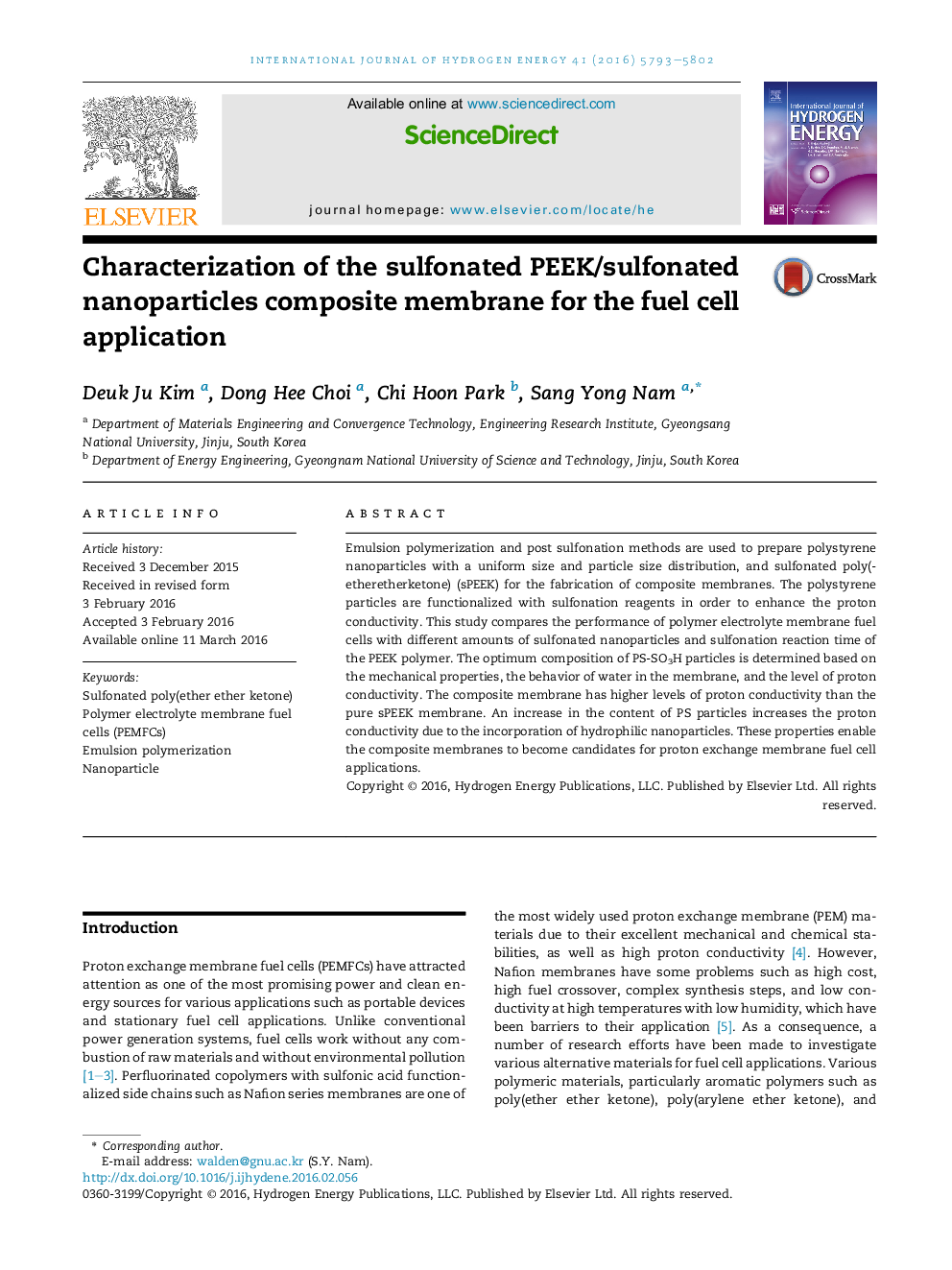| Article ID | Journal | Published Year | Pages | File Type |
|---|---|---|---|---|
| 1277693 | International Journal of Hydrogen Energy | 2016 | 10 Pages |
•Cationic polystyrene particles were prepared through emulsion polymerization.•The polystyrene particles are functionalized with sulfonation reagents.•The composite membrane has higher levels of proton conductivity.
Emulsion polymerization and post sulfonation methods are used to prepare polystyrene nanoparticles with a uniform size and particle size distribution, and sulfonated poly(etheretherketone) (sPEEK) for the fabrication of composite membranes. The polystyrene particles are functionalized with sulfonation reagents in order to enhance the proton conductivity. This study compares the performance of polymer electrolyte membrane fuel cells with different amounts of sulfonated nanoparticles and sulfonation reaction time of the PEEK polymer. The optimum composition of PS-SO3H particles is determined based on the mechanical properties, the behavior of water in the membrane, and the level of proton conductivity. The composite membrane has higher levels of proton conductivity than the pure sPEEK membrane. An increase in the content of PS particles increases the proton conductivity due to the incorporation of hydrophilic nanoparticles. These properties enable the composite membranes to become candidates for proton exchange membrane fuel cell applications.
